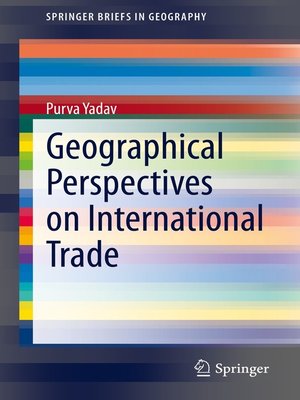
Sign up to save your library
With an OverDrive account, you can save your favorite libraries for at-a-glance information about availability. Find out more about OverDrive accounts.
Find this title in Libby, the library reading app by OverDrive.



Search for a digital library with this title
Title found at these libraries:
| Library Name | Distance |
|---|---|
| Loading... |
This book analyzes spatial and temporal patterns of international trade from a geographical perspective. Trade is an important key to understanding the changing dynamics of economic spaces over time. However, studies by geographers are largely confined to case studies, whereas the spatial dimension is often missing from the approach of economists. This study highlights spatial patterns and commodity composition of global trade and the nature of relationship between trade and other economic attributes. A case study of the MERCOSUR trade block examines inter-regional and intra-regional trade flows. The book captures a comprehensive picture of the structure of international exchange by using ample maps and illustrations as supporting features.
This book is a significant contribution to geographical, economical and social sciences research and very useful to graduate and post-graduate students as well as scientists of all related areas who have interest in exploring the changing dynamics of the global economy via trade flows. It provides a road map to further explore different dimensions of international trade and its role in understanding the transforming global economy.







